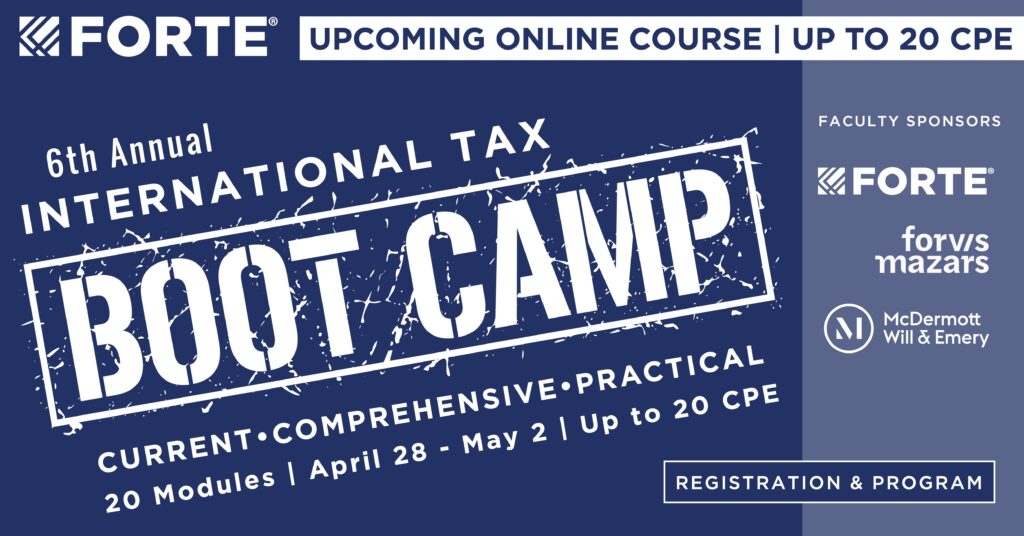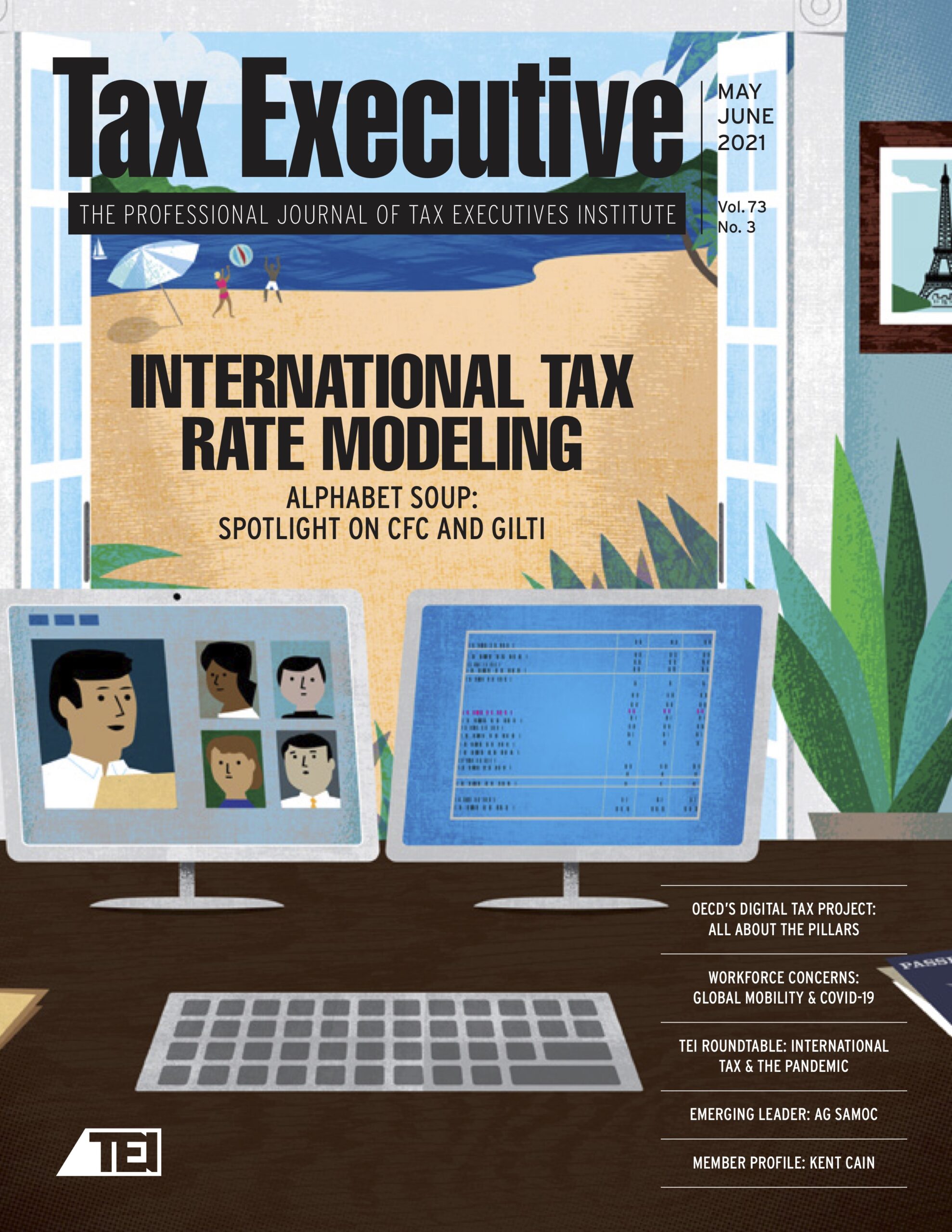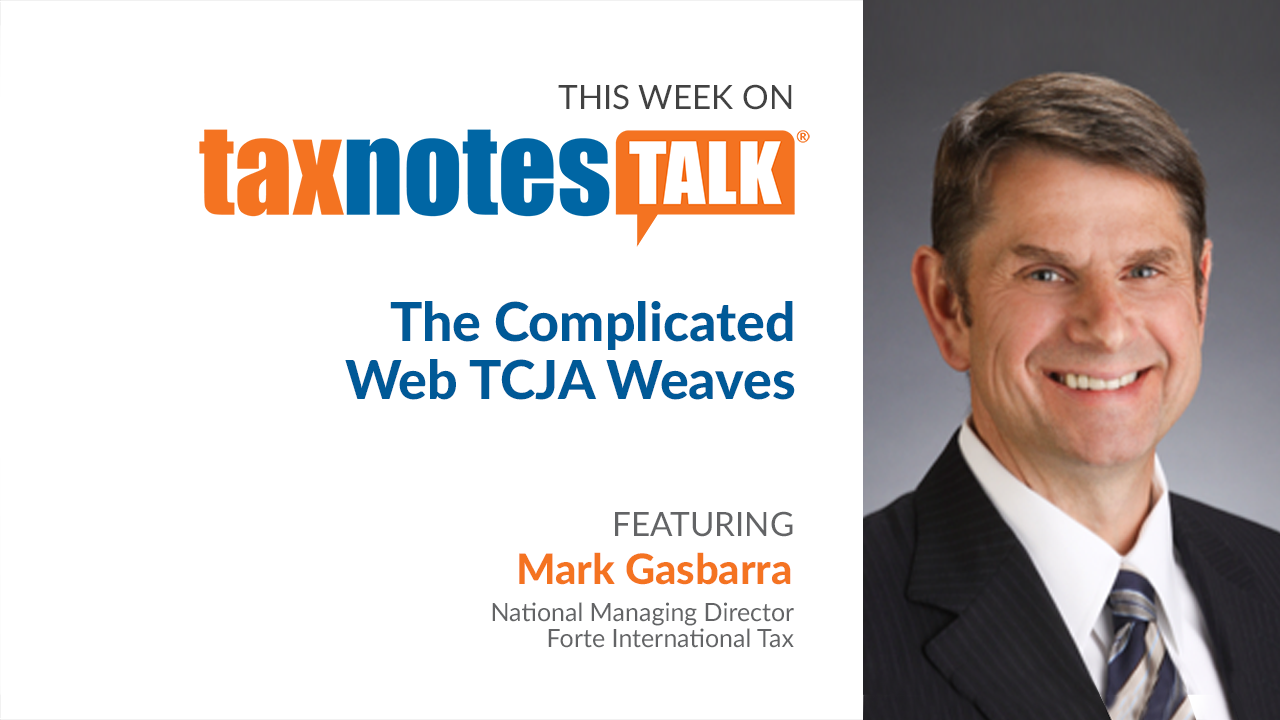Insights
BLOG

International Tax Modeling Remains Critical in 2025
May 2025
As we start to read through the House and Senate preliminary drafts of the “Big Beautiful Bill”, one thing is clear – 2025 will be defined by significant tax changes that will impact companies doing business in the United States. In order to take advantage of the tax benefits being offered, mitigate risk, and satisfy stakeholders, modeling will be essential.
The need for robust international tax modeling has never been greater than now. Multinationals will need to assess the impact and interplay between the US international tax regime and Pillar Two, including the impact of the GILTI push-down adjustment and other cross-border tax allocations while simultaneously incorporating the potential impact of “The One, Big, Beautiful Bill”. Other considerations include the impact transfer pricing implications of supply chain decisions, impact of tariffs and change to the BEAT provisions.
Below is a list of several common modeling scenarios using Forte’s VantagePoint software. Please reach out if you have technical questions based on your particular facts or circumstances or if you would like to discuss how to add value to your company through international tax planning.
- Repatriation Planning
- APB23 analysis for financial reporting
- BEAT planning, including waiver of deductions to avoid the so-called Cliff Effect
- Section 250 FDII/163(j) Ordering Rule
- Subpart F and Section 954(b)(4)
- GILTI High-taxed Income Exclusion
- Impact on Foreign Asset Base
- Impact on Pillar Two
- Research and Development – Capitalization vs. S.174 Deduction
- Impact on FDII and FTC
- Proposed tax law changes
Section 987 Regulations
March 2025
In than waning days of the Biden Administration, Treasury issued final regulations under section 987. These regulations appeared in the Federal Register on December 11, 2024, and are effective for tax years starting after 12/31/24.
In a memorandum published on January 20, 2025, the Trump Administration issued a memorandum titled “Regulatory Freeze Pending Review.” Because the new 987 regulations were published and took effect prior to the issuance of this memorandum, they are not subject to the first two paragraphs of that memorandum. But paragraph (3) directs agency heads to consider:
postponing for 60 days from the date of this memorandum the effective date for any rules that have been published in the Federal Register, or any rules that have been issued in any manner but have not taken effect, for the purpose of reviewing any questions of fact, law, and policy that the rules may raise. During this 60-day period, where appropriate and consistent with applicable law, consider opening a comment period to allow interested parties to provide comments about issues of fact, law, and policy raised by the rules postponed under this memorandum . . .
There is no provision that specifies how far back in time the agency heads are supposed to go. But regulations published in December 2024 strike us as ripe for reconsideration. Thus, the question of whether the final regulations are really final depends on what happens in the 60 days following January 20, 2025 (which is March 22, 2025 by our calculation (10 in January, 28 in February, and 22 in March)).
We are not aware of any decisions that have been made with regard to these final regulations, but note that they are to some extent in limbo. Our comments in this article are all based on the assumption that they come out of limbo as written.
There is a bit of a horse race created by the regulations. Is one better off staying in the familiar territory of recognizing section 987 gain or loss based on “actual remittances” or better off with a new “annual recognition election” (meaning that 100% of a taxpayer’s “unrealized section 987 gain or loss” is subject to recognition even if the QBU has a zero remittance)? Is one better off making a new “current rate election election,” even though realized losses get “suspended” (i.e., can only be used against section 987 gains recognized in future years).
The good news is that a taxpayer is only bound by its election for 5 years. The bad news is that the ultimate answer depends on two unpredictable facts: (i) future FX rates, and (ii) future growth or shrinkage of a QBU’s business.
As practitioners, we have developed our own sense about how the world works, and we have noted that branch structures are most frequently encountered in the financial services industry and in foreign sales operations. One is less likely to find branches that engage in manufacturing.
We are grateful for elections, but have wondered under what circumstances would we advise a client to make either the “current rate election” or the “annual recognition election.” The current rate election offers the most “simplification” to foreign QBUs that hold significant depreciable assets. The price that one pays for this simplification the suspension of losses, and this could be a steep price. Happily, losses are not disallowed and if you have a 987 gain year following a 987 loss year, you get immediate netting. But if you have a 987 loss year following a 987 gain year, there is no carryback of the loss. It is suspended until the next gain year materializes.
Presumably, there are some “planning levers” within this set of rules to the extent that one can control the direction of net inflows and outflows in relation to a QBU. But there are probably better ways to spend one’s time. For this reason, we would generally steer clear of this election, except the case of QBUs with significant depreciable assets.
The annual recognition election does not entail a specific trade-off (as compared to the current rate election). This likewise offers a kind of simplification because one does not have to compute a remittance percentage. In loss years, there is a big loss. In gain years, there is a big gain. There is one thing of which a taxpayer has no control whatsoever, and that is FX rates. For this reason, we prefer world in which one has a little more control of the tax cost.
The bottom line is that we like the world that we know, and we like things that we can control. So for most taxpayers, we suspect that the best election is no election.
On February 25, we gathered to share our insights on the Section 987 Regulations, including the following. Link to the recording is below.
– Purposes of IRC 987 and Effective Date of the Final 987 Regulations
– Foreign Exchange Exposure Pool Accounting
– Annual Recognition Election
– Guidance on eligible pre-transition methods
– Current Rate Election
– Sourcing of 987 Gains and Losses
– Treatment of §987 within VantagePoint
GloBE Information Return (GIR) – Development Matters
October 2024
Here are a few insights we have gained through analyzing the OECD’s XML Schema Definition (XSD). XML stands for extensible markup language. XML is a flexible text format used to create structured documents by defining custom tags. It is widely used for exchanging information via the internet. The IRS’s Modernized e-file (MEF) program also uses XML.
BEPS brought us Country-by-Country Reporting (CbCR) and Pillar Two’s GIR follows similar centralized filing and global exchange of information via XML logistics. Like CbCR, MNE Group selects a Filing Entity and Jurisdiction which may or may not be the Ultimate Parent Entity (UPE). Any number of jurisdictions may impose separate local GIR filing requirements, which should correspond to the OECD’s XSD.
While formal GIR filing requirements are not later than 15 months (18 months the first filing year) after the end of the MNE Groups first applicable year, we plan on releasing Forte proprietary version over the next several months along with automatic integration to the OECD XSD. Forte’s Pillar Two computations and related reports will automatically populate the GIR to ensure compliance and facilitates filing in all jurisdictions using the standardized XSD.
In the process of programming the GIR, we’ve identified some details that may not be readily apparent when viewing the requirements at a distance.
Jurisdictional Safe Harbours
Jurisdictional Sub-Groups
Entity Classifications
- Permanent Safe Harbours
- Jurisdictional Sub-groups
- Tax Transparent Entities and Sub-types
Pillar Two and IRS Notice 2023-80
May 2024
IRS Notice 2023-80 (“the Notice”) provides the U.S. government’s view on the foreign tax credit treatment of Pillar Two Top-up Taxes (which we have capitalized in this article for clarity) and makes a clear distinction between Qualified Domestic Minimum Top-up tax (“QDMTT”) and the extra jurisdictional Top-up Taxes imposed by an Income Inclusion Regime (“IIR”) and the backstop Undertaxed Profits Rule (“UTPR”). The Notice also raises the question of whether foreign losses taken into account in determining a jurisdictional effective tax rate should be treated as “foreign use” under the Dual Consolidated Loss (“DCL”) provisions. If so, the loss in question is ineligible for the DCL certification that there has been no “foreign use” of the loss.
We have surveyed what other commenters had to say about the Notice. There were in total 11 comment letters filed. View All Comments here: https://www.regulations.gov/docket/IRS-2023-0060/comments
There is an important interplay between Pillar Two Top-up Taxes and the U.S. international tax regime – specifically the proposed noncreditability of so-called “Final Top-up Taxes” (which we have also capitalized for clarity). An important consideration when coordinating these rules is the potential for computational circularity. Computational circularity is a potential issue because the allowance of a foreign tax credit impacts the U.S. tax cost of a GILTI inclusion, and the net GILTI tax cost is a Covered Tax for purposes of Pillar Two.
TEI Members – Watch for the full article in the July/August TEI Magazine.
Annual Update: 2023 International Tax Compliance
April 23, 2024
It is essential to understand the U.S. international reporting requirements for U.S. shareholders with foreign operations.
There as some significant additions and changes to the international tax reporting requirements for the 2023 tax year, including Form 4626 for the Corporate Alternative Minimum tax.
As well, there is a connection between Form 8975 Country-by-country Report and the Transitional CbCR Safe Harbour for purposes of Pillar Two.
Learn about these items and more, including potential traps for the unwary, as you listen in to this technical update.
US Export Incentives: IC-DISC & FDII Optimization
April 8, 2024
The history of U.S. Export Tax Incentives is long, starting with the introduction of Domestic International Sales Corporations (DISC) in 1971 to current day with the introduction of Foreign Derived Intangible Income (FDII) enacted as part the 2017 Tax Cuts and Jobs Act.
It is essential to understand the transformation from DISC to the Interest Charge DISC (IC-DISC) in 1984 and the additional tax savings available to IC-DISC shareholders resulting from the lower tax rates associated with Qualified Dividend Income.
In order to optimize IC-DISC and tax savings it is important to understand the similarities and differences between IC-DISC and FDII tax rules and when the two provisions may be used simultaneously.
Global Tax Optimization Strategies
March 7, 2024
The rapidly changing tax rules and computational complexity across an increasingly interdependent global tax system presents significant challenges.
Legal structures and entity classifications, transfer pricing, historical tax attributes, tax elections, and Treas. Reg. 1.861-8 methodology all matter and impact your results. They all must be modeled together to ensure data integrity, facilitating global tax optimization. For example, Pillar Two QDMTTs impact the US GILTI and FTC calculations, which then impact Pillar Two Final top-up taxes.
Following are several ways that companies can optimize their global tax position, including their Global Effective Tax Rate.
Pillar Two and U.S. Tax Interplay
Subpart F, GILTI and High-Tax Income Elections
Treas. Reg. 1.861-8, FDII and Foreign Tax Credit
163(j), BEAT and CAMT
Our Global Tax Optimization (GTO) Bootcamp transforms the latest international tax requirements into practical ready-to-use implementation guidance, by combining detailed international tax technical analysis with an integrated Case Study.
Notice 2023-80 Comments
February 9, 2024
Excerpt
In summary, we recommend that Final Top-up Taxes should not result in calculation circularity for the income tax years to which they relate. To accomplish this, we suggest a rule that specifically allocates those taxes to Section 959(c)(3) earnings as of the end of the low-taxed constituent entity’s computational tax year.
Globe Meets GILTI – Ready, Set, Go!
December 18, 2023
By Mark Gasbarra
2024 is around the corner and we wanted to alert you to the latest Pillar Two Guidance provided by IRS Notice 2023-80.
https://www.irs.gov/pub/irs-drop/n-23-80.pdf
The guidance for coordination of Pillar 2 QDMTT and GILTI is completely consistent with VantagePoint’s fully integrated Pillar Two/GILTI logic with or without the GILTI High-tax Exclusion.
- QDMTT’s will be included in the GILTI high-tax exclusion and will be eligible for the U.S. Foreign Tax Credit, and
- The after-tax U.S. GILTI tax cost will be included in Covered Taxes for Pillar Two purposes.
In addition to this welcome QDMTT/GILTI guidance, the IRS Notice proposes novel guidance on the treatment of Final Top-up Taxes, associated with Income Inclusion Regimes (IIR) and the Undertaxed Profits Rule (UTPR).
Please let us know if you would like to schedule a meeting to discuss how Pillar Two is affecting your Company and VantagePoint’s additional global tax planning features.
We will be providing a comprehensive analysis of IRS Notice 2023-80 at the upcoming Webinar.
Step-by-Step Methodology to Implementing Pillar Two
October 9, 2023
By Mark Gasbarra
Integrating Pillar Two operational rules along with other U.S. international tax calculations and compliance requirements is essential to provide accurate forecasting and reliable results for stakeholders.
Forte has developed an unique approach working with clients and using VantagePoint™.
STEP 1: Building the Analytical Framework
- OECD Guidance and Jurisdictional Legislation
- Legal/Tax Organizational Structure
- Jurisdictional Tax Attributes
- Financial Accounting Net Income or Loss (FANIL)
- Detailed Data Points and Sources
STEP 2: Transitional Safe Harbour and QDMTT
- Multiple Tax Purposes
- CbCR, GloBE and Covered Tax Adjustments
- Transitional Safe Harbour Analysis
- Qualified Domestic Top-up Tax
- Safe Harbour, Credit and U.S. FTC Analysis
STEP 3: U.S. Tax Calculations and Pillar Two Interplay
- Pillar Two Operational Rules
- GILTI, FDII and FTC
- CFC Allocation Keys
- Pillar Two Report
STEP 4: Application of Charging Provisions
- Income Inclusion Regimes and Rollup
- UTPR considerations
- UPE Safe Harbour
STEP 5: Review & Report Results
- Pro Forma GloBE Information Return
- Effective Tax Rate Analysis
- Process Improvement Recommendations
Learn more at our upcoming Pillar Two Boot Camp and Integrated Case Study.
Pillar Two – It’s All About the Interplay
September 6, 2023
By Mark Gasbarra
Understanding Pillar Two (“P2”) and its impact on a company’s global effective tax rate cannot not be measured in isolation – in fact it’s all about the interplay.
P2 is designed to ensure that every multinational enterprise (“MNE”) is subject to a minimum effective tax rate of 15% in every jurisdiction in which they operate. This effective tax rate is determined is each jurisdiction by dividing the jurisdiction’s Covered Taxes by the jurisdictions GloBE Income.
Conceptually, GloBE Income is relatively straightforward and is determined by adjusting the jurisdiction’s Financial Accounting Net Income or Loss (“FANIL”) by a series of specifically defined adjustments designed to ensure comparability between MNEs.
Calculating Covered Taxes is much more complex and is all about the interplay between overlapping and disparate taxation rights and concepts. In particular, the three primary areas of interplay are between the financial accounting principles, local country jurisdictional taxable income determination, and finally with CFC regimes such as the U.S. GILTI regime.



